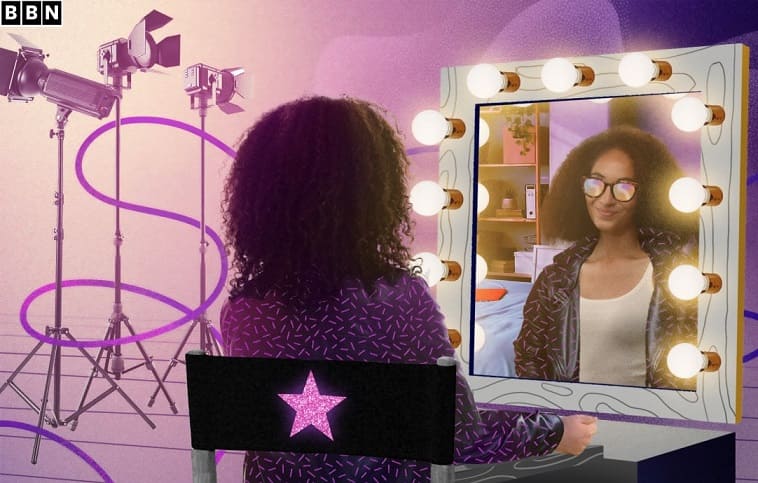How Content Creators Are Reshaping Hollywood Power Structure
In 2025, the red carpet isn’t just for A-list movie stars — it’s for YouTubers, Twitch streamers, and TikTok creators who are now headlining Netflix shows and movie premieres. The entertainment landscape has dramatically shifted, with digital-native creators becoming some of Hollywood’s most powerful and influential figures.
As traditional media struggles to capture fragmented audiences, creators come armed not only with talent but also with something studios crave: loyal, engaged fanbases. What once was a risk in casting an unknown face is now a strategic move — studios are investing in creators who bring millions of followers, built-in buzz, and an uncanny ability to drive engagement with a single post.
A New Currency: Influence Over Fame
Today, follower counts, engagement rates, and content virality carry more weight than box office receipts or critical acclaim. The entertainment industry is no longer gatekept by agents or casting directors alone — creators who built their own audiences on social media are now shaping the stories being told on screen.
Studios are increasingly viewing creators as more than just influencers — they’re partners. According to a 2025 Digital Voices report, user-generated content drives nine times more engagement than traditional brand messaging. This aligns with broader trends showing that millennials and Gen Z prefer social content over traditional TV or film, and feel a deeper connection with online creators.
As China Widener of Deloitte points out, Gen Z spends 54% more time on social platforms than on legacy media. In this environment, studios see creators not only as performers but as built-in marketing machines.
Hollywood Eyesore Demolished After 6 Fires in Less Than a Year
Hollywood’s Old Guard Is Being Challenged
The traditional studio system, built on established actors and conventional fame, is being forced to adapt — or risk falling behind. Seth Schachner, managing director at Strat Americas, puts it bluntly: “The studios are maybe a little bit clueless… Is Tom Cruise or Brad Pitt really appealing to 20-somethings or Gen Z?”
In fact, casting decisions have already shifted. As far back as 2018, reports surfaced of “social media quotas” influencing film casting. In 2025, Stranger Things star Maya Hawke confirmed that producers are routinely handed follower-count spreadsheets when assembling casts. As casting director Tiffany Little Canfield notes, “I see social media numbers as a type of fame — just a new way to quantify it.”
The Metrics That Really Matter
But it’s not just about raw numbers anymore. “Someone with 10 million followers isn’t necessarily a big deal anymore,” says Lindsay Nead, founder of Parker Management, a top digital talent agency. “It’s all about the analytics — who the audience is, where they are, and how much they engage.”
In other words, reach without relevance doesn’t move the needle. Micro-influencers with smaller, deeply engaged communities often hold more sway than celebrities with passive, inflated followings.
Creators as Creative Powerhouses
Gone are the days when influencers were only brought in to promote a final product. Now, they’re involved from day one — co-producing, writing, even shaping entire worlds. Nead says the industry is embracing long-term partnerships over one-off campaigns. “The most successful projects are those where creators are brought in from the beginning,” she says. “They’re not just hired hands — they’re shaping the vision.”
This shift is producing better, more authentic content — because the people driving it know exactly what resonates with their audience.
Representation Without Permission
For creators from underrepresented backgrounds, digital platforms have offered a way in — and up. Instead of waiting for casting calls or approvals, they’ve built their own platforms, proven their worth, and forced Hollywood to take notice.
YouTuber Eugene Lee Yang has used his platform to tell powerful LGBTQ+ stories and now develops larger projects centered on queer narratives. Comedian Drea Okeke transformed viral skits into acting roles and speaking gigs. Rudy Mancuso, once a Vine star, directed and starred in Musica, a feature film based on his Latinx roots. And TikTok creator Zarna Garg now headlines A Nice Indian Boy, produced by Mindy Kaling.
These aren’t exceptions — they’re trailblazers. And they’ve shown that when creators tell authentic, overlooked stories, audiences show up.
The Future: Creators as Ecosystems
Today’s creators don’t just make content — they run businesses, launch brands, and shape culture. They write, direct, edit, promote, and monetize without needing the traditional Hollywood machine. As Schachner says, “The old rules don’t always apply.”
That independence makes them powerful. And it’s forcing the entertainment industry to re-evaluate everything — from casting to marketing to production. In this new era, the creators who understand their audience hold the keys to the future.
The real question is no longer whether content creators are Hollywood-ready — it’s whether Hollywood is ready for them.
Thanks for visiting Best Breaking News

